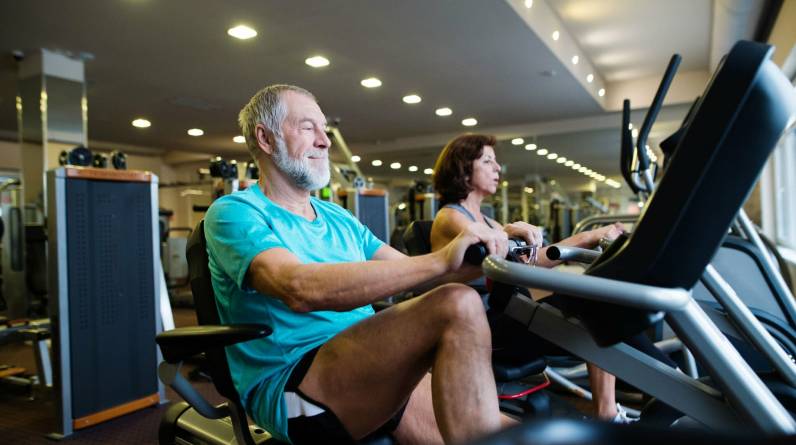
Did you know about 42% of Americans are obese? You need to do your stretches properly as part of your workout regimen. It’s never too late to start making exercise and fitness a priority, but getting started is the hardest part.
A great way to get started with your fitness goals is by making stretching part of your daily routine. Stretching offers many health benefits and is essential to an exercise regimen. Regular exercise speeds up your metabolism and helps you maintain energy for an extended time.
Read on to learn the wonderful benefits of stretching before any exercise.
Advantages of Stretching
Stretching can be an essential part of a balanced fitness and health program. Benefits include:
Build Flexibility and Strength
Stretching benefits people who want to build flexibility and strength. This is because stretching increases the range of motion of the joints and muscles. That way, your body can move more in various ways.
Stretching also helps to improve balance, agility, and coordination. It helps to reduce the risk of injuring yourself while exercising, as it helps to increase the flexibility of muscles and joints.
Additionally, stretching helps improve posture and can reduce tight and stiff muscles. This can be from too much sitting or overuse of activities.
Finally, stretching is an integral part of injury rehabilitation. It is an effective way to increase flexibility and range of motion after an injury.
Improve Your Range of Motion
Stretching can help the muscle fibers lengthen and improve its range of motion. This prevents them from becoming too tight and stiff, which can detract from your mobility. When stretching, it’s essential to focus on moving your joints and muscles through a full range of motion exercises.
These can also help challenge small muscles and increase flexibility. Over time, consistent stretching can help improve your range of motion, allowing your arms and legs to move to their fullest potential.
Maintain Proper Posture
Stretching can be an incredibly beneficial way to help you maintain proper posture. It keeps your muscles in the correct alignment to maintain good posture.
There are a variety of different kinds of stretches you can do to maintain good posture. These include neck, shoulder, back, and hip flexor stretches.
Regular stretching can help improve your posture by stretching out tight muscles and strengthening weak muscles. This allows you to move better and free up energy.
Incorporating regular postural stretches into your routine will help keep your spine in a neutral and healthy alignment. It’ll reduce and eliminate back pain. It’ll also help you keep a healthy posture and improve your mental health.
Improve Athletic Performance
Improved flexibility leads to improved coordination, agility, and balance. These are all crucial components of successful athletic performance.
Stretching can also increase muscle blood flow, allowing them to recover faster and work better. Furthermore, stretching can reduce the risk of pulled muscles and other soft tissue injuries. This will help keep athletes in shape and healthy.
Reduce Stress in Your Joints
Stretching is a great way to reduce stress in your joints. Regular stretching can increase flexibility, reduce stiffness and pain, and improve overall joint health. Stretching can help prevent injuries and strengthen the muscles around the joints, helping them to safeguard against injury.
Additionally, stretching can reduce inflammation and make joint function smoother, more efficient, and more comfortable. When done properly, stretching can offer a wealth of benefits to those suffering from joint pain.
Stress Relief and Increased Feelings of Relaxation
Stretching is a great way to reduce stress and promote feelings of relaxation. It increases blood flow and circulation throughout the body, providing a better supply of oxygen to the muscles and organs.
Stretching also helps release tension away from the neck and shoulders. These are usually tight areas that can contribute to feelings of stress and fatigue. Furthermore, having good flexibility can help improve posture and reduce body aches.
Improve Your Concentration
Stretching is beneficial for improving your concentration. Muscles that are stiff or tight can prevent you from being able to focus on the task at hand.
Stretching can improve circulation, boost energy levels and increase alertness. Furthermore, stretching can help to clear your mind as it can be a form of meditation. It can help relax specific tense muscles and reduce physical discomfort that may distract you from your task.
Proper Stretching Techniques
Being able to stay flexible throughout the year is critical to your health. But stretching can be complicated, and if done wrong, or else you won’t see benefits and risk injuries. Proper stretching techniques include:
Dynamic Stretching Strategies
Dynamic stretching strategies are vital to ensure your safety and maximize the benefits. To perform dynamic stretching, start with a warmed-up body. Make sure to take slow and gentle movements that are comfortable but challenging.
Make sure to listen to your body for feedback on how it feels. This will help you keep your muscles relaxed and lubricated.
PNF Stretching Exercises
PNF stands for proprioceptive neuromuscular facilitation. This is where you stretch a muscle, then contract and relax with an isometric stretch. This provides a deeper stretch and helps strengthen the muscle.
To use PNF stretching exercises, start by warming your body and stretching the muscle group you plan to target. During the PNF stretch, exert your muscle group against the opposition for 6-10 seconds, and then relax into further stretching.
Your muscles should feel relaxed and refreshed from the stretch. Make sure to avoid any jerky or quick movements, as this could cause injury to your muscles. Also, as with any stretching exercise, take breaks and drink plenty of water to hydrate your muscles properly.
Cool Down Stretches for Improved Performance
Cool-down stretches are designed to decrease blood flow to the worked muscles, which can help prevent cramping, soreness, and fatigue. The stretches should be held for at least 15 to 30 seconds and done slowly and gently.
Focus on making small movements, as opposed to large and abrupt ones. Avoid jerking, bouncing, and forcing the body too far; the stretches should be comfortable.
Start with your arms and gently move through your shoulders, chest, abdomen, waist, lower back, buttocks, thighs, calves, and ankles. The ‘cool down’ stretching routine should be the last activity in your workout.
This helps the muscles to relax gradually, reducing the risk of injury and lactic acid buildup. Remember to rest between exercises, so you don’t overwork yourself.
What to Avoid When Stretching
Injuries from not being limber enough can happen anytime, even without strenuous work or athletic activity. Overly aggressive or uninformed stretching habits can cause injuries as well. Here are some things to avoid doing when stretching:
Over-Stretching or Pushing Yourself Too Hard
When stretching, you should never force your body into pain or push a stretch beyond a comfortable level. You should also never pull a muscle with an active injury or tear.
You should always listen to your body when stretching. It is best to back off if you feel any pain or tightness.
You should also incorporate gradual, gentle stretching into your routine for the most effective and safe stretching. Lastly, always warm up before stretching with light aerobic exercise, as you should never stretch cold muscles.
Consult a chiropractor if you feel you have injuries or need proper alignment. Make sure you see this local chiropractor and book a consultation today to keep your bones and muscles healthy.
Avoid Bouncing While Stretching
Bouncing is when your muscles are stretched beyond what your body can take and rapidly released. This could cause more harm than good as it does not allow for adequate stretching of the muscles and ligaments and can even cause tears.
Hold your position for 20-30 seconds and focus on breathing to lengthen the stretching time. Stretching should never be painful. Instead, it should have a light-pulling sensation.
If a stretch causes pain, stop and do not return to it. Stretching should be enjoyable and should slightly increase flexibility and range of motion.
Avoid Stretching Your Joints Too Far
Push yourself, but be aware of the limits. Stretching too far can cause excessive tension in the joints and muscles, which could lead to significant pain and soreness. Additionally, stretching beyond what is comfortable can increase the risk of tearing ligaments or tendons, resulting in long-term damage.
To avoid these risks, perform a dynamic warm-up to prepare the muscles and joints before stretching. Allow yourself to go only as far as comfortable, and focus more on lengthening the connective tissue fibers.
Stretching After You Eat
Stretching should be approached with caution. Intense stretching requires great energy and can cause your blood pressure to drop. This can lead to lightheadedness, dizziness, and even fainting.
If you recently ate a large meal, wait until your body has had a chance to digest your food before you attempt stretching. Additionally, stretching too vigorously can put stress on your stomach, which can cause nausea. Also, stretching can affect food movement in your digestive tract, leading to digestive issues.
Leverage on the Benefits of Stretching
Stretching offers many physical and psychological benefits, from improved circulation to better focus and concentration. Its ease of access and low cost makes for a must-do habit for anyone seeking a healthier lifestyle.
Incorporating a basic stretching routine into your daily life can have lasting positive effects. Aside from knowing the benefits of stretching, you must also consider making lifestyle changes and consult a chiropractor today.
What are you waiting for? Start stretching today and see the amazing results!
Want to learn more? Visit our website for the latest guides and insights for all your needs!






